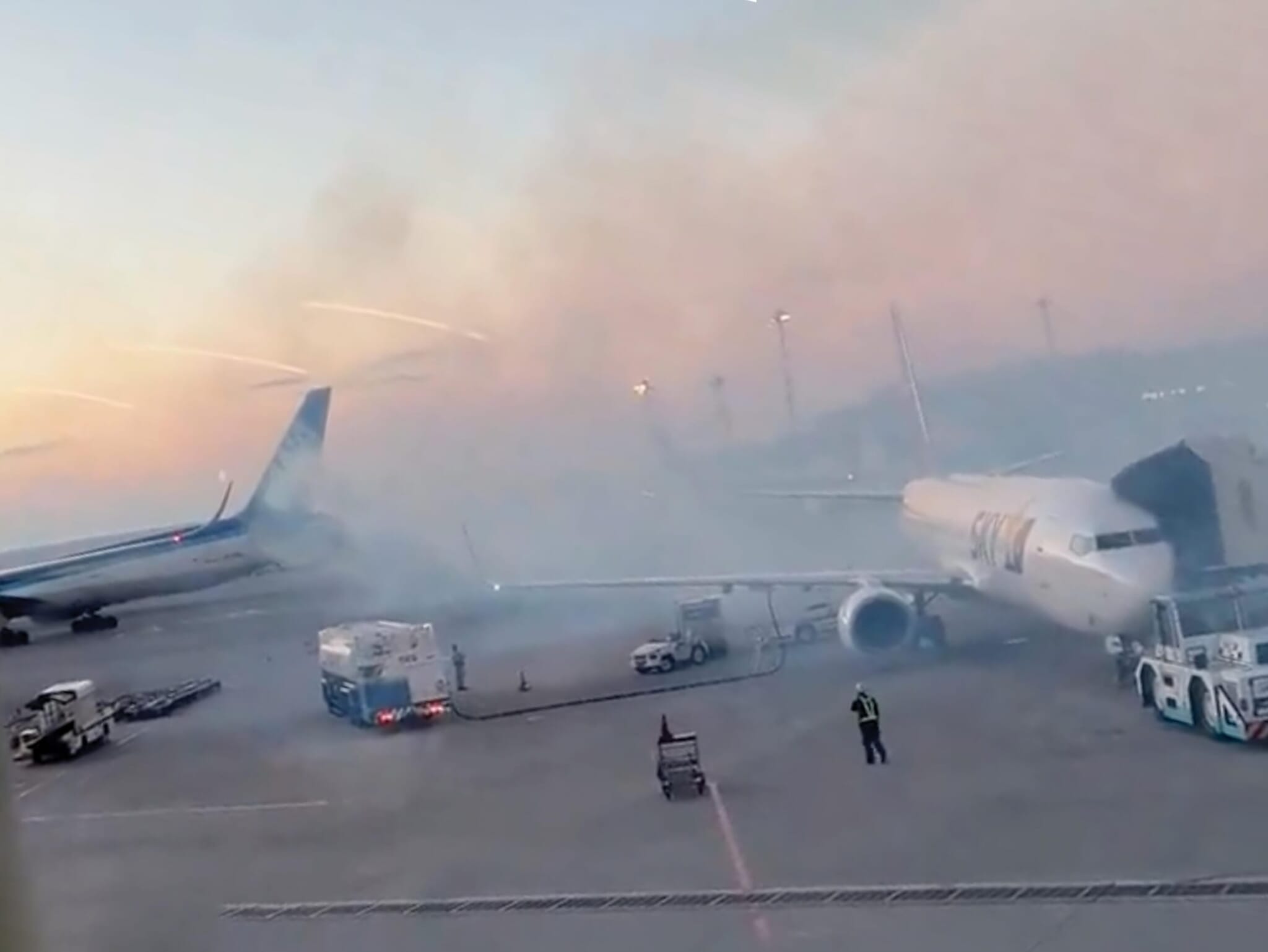At just before 7 p.m. on. Sunday, white smoke was seen coming out of the auxiliary engine of an All Nippon Airways (ANA) flight that was due to fly from Naha Airport in Okinawa to Tokyo. A passenger waiting for another flight shot footage of the smoke as people looked out of the window in shock. Air traffic control spotted the issue and firefighting vehicles were soon called to the scene. According to ANA, there were 505 passengers on board the flight. They weren’t asked to disembark.
An inspection of the Boeing aircraft revealed that oil was leaking from the engine. After maintenance personnel repaired the problem and confirmed it was safe, the airplane took off for Haneda Airport at approximately 9:10 p.m. Fortunately, no one was injured, and no other flights were affected.
A Bad Year for Boeing
For Boeing, though, it’s yet another incident to add to the catalog this year. On January 2, a Japan Airlines (JAL) plane collided with an earthquake relief aircraft at Haneda Airport. Five of the six people inside the smaller vessel were killed. Remarkably, all 379 people aboard the JAL airbus survived. Three days later, an Alaska Airlines flight made an emergency landing after a fuselage panel blew out.
A series of incidents since then have raised concerns about air travel. On May 9, a Boeing 737-300 aircraft skidded off a runway at Dakar’s Blaise Diagne Airport in Senegal. It left 10 people injured, four of them seriously. On the same day, the aircraft tires of a Boeing 737-800 belonging to Corendon Airlines burst while landing at Gazipaşa, an airport near the Mediterranean coastal town of Alanya in Turkey. All 190 people on board were evacuated safely.
Flying Still Safer Than Most Forms of Travel
That same month, a Boeing 737 Max 8 flown by Southwest Airlines rocked side to side while in the air. It’s a dangerous movement known as a Dutch roll. In June, an investigation was launched after a Southwest Airlines plane descended prematurely, flying just 525 feet above a neighborhood in Yukon, Oklahoma. Despite these recent incidents, data shows that flying is safer than most forms of travel.









